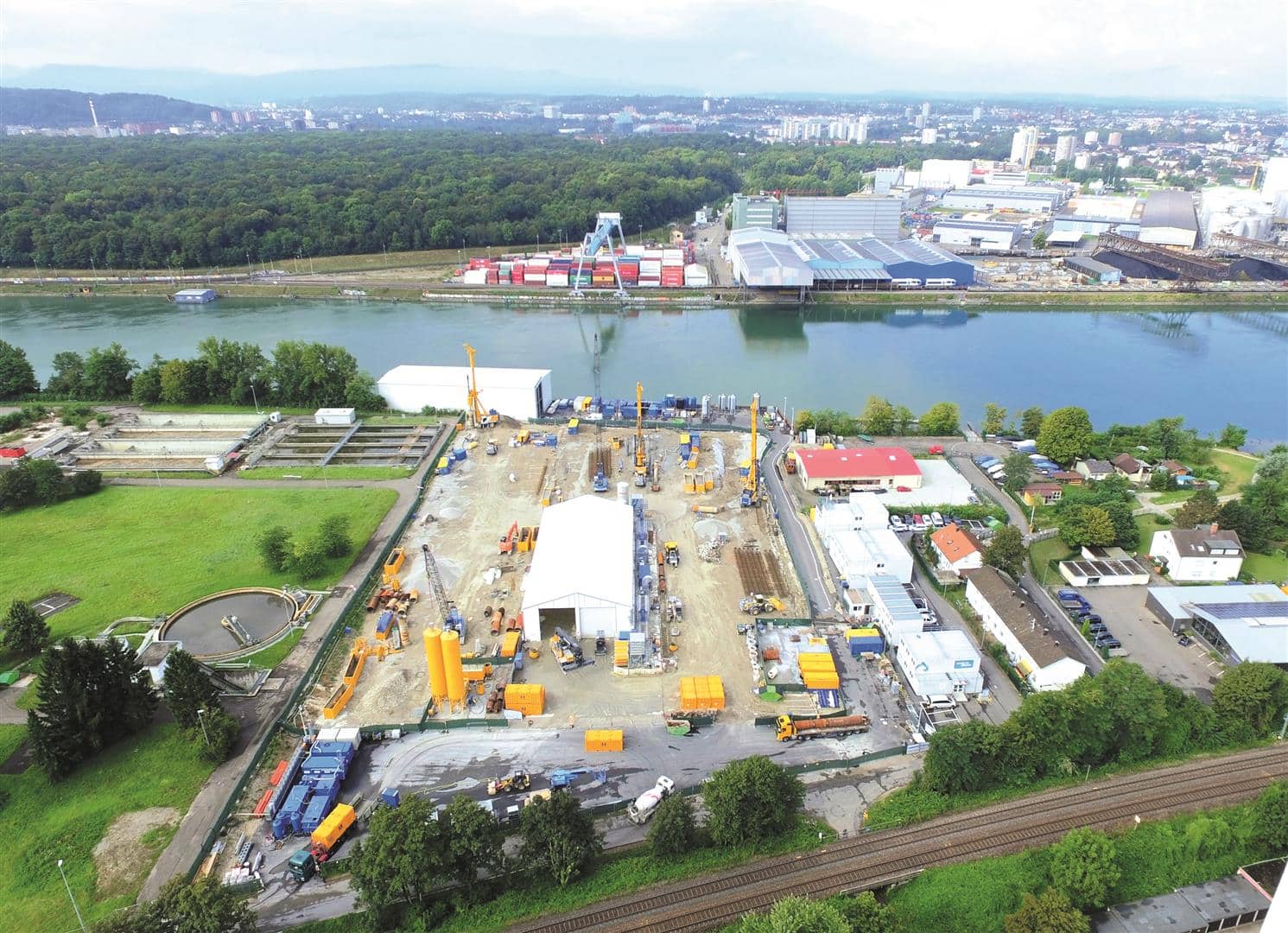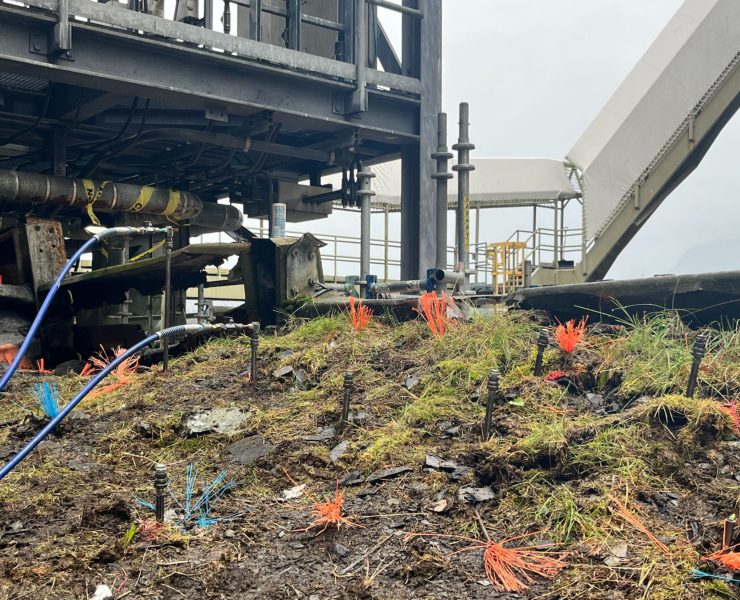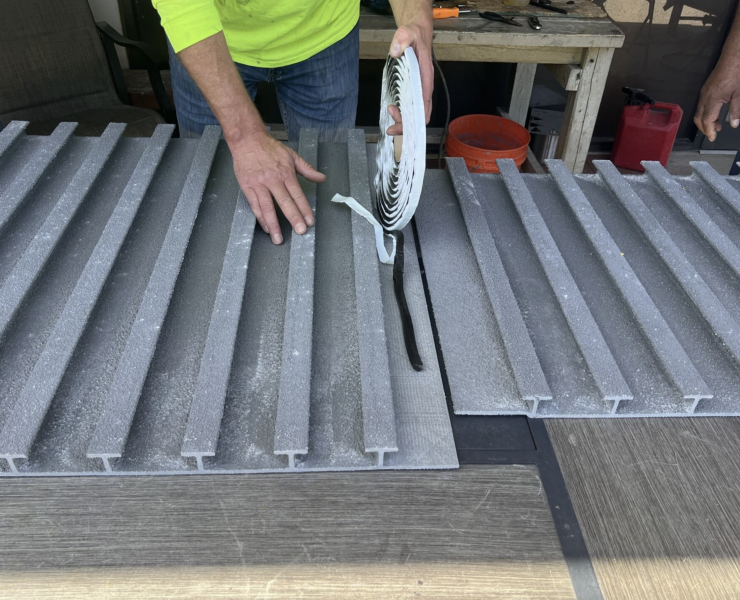Remediation of the Kesslergrube Landfill


Grenzach-Wyhlen, Germany – The remediation project on the former site of the Kesslergrube landfill (perimeter 1/3 northwest) began in late summer 2015. Roche Pharma AG commissioned BAUER Resources GmbH and its environmental division Bauer Umwelt, which specializes in contamination remediation, to carry out the work. BAUER Spezialtiefbau GmbH began drilling the large-diameter boreholes for the construction of a secant pile wall in July 2016 and has now nearly completed the project as of early May. A remaining rig will be used to close the last gap in the bored pile wall near the container loading area by the end of May.
First, the large diameter boreholes were drilled using three BG 39 large-scale rotary drilling rigs. Finally, five large-diameter drilling rigs were used to complete the 888 piles for the bored pile wall. The piles were driven into the underlying rock to depths of up to 87 ft. The pile wall will secure the excavation area hydraulically and structurally while providing a foundation for the construction of a sound-insulated, air-tight enclosure. The excavation of the contaminated soil at the enclosed site will begin in the fall of 2017.

The replacement bores, which average 41 ft deep and measure 5 ft in diameter, were already completed by the end of January. They were constructed outside the area of the bored pile wall and ensure that no contaminated soil remains in the ground. The resulting holes were filled with gravel or sand concrete. In total, a 7,104 ft² area was cleaned up by replacing the soil, and some 108,000 tons of non-contaminated and contaminated soil material were removed or excavated. The material was transported by rail for thermal disposal in about 3,666 gas-tight and accident-proof special containers.
“The remediation project has been accident-free so far,” Jochen Kaspar, project manager for Bauer Umwelt, and Tobias Hampel, site manager for Bauer Spezialtiefbau, are proud to report. The drilling work has been carried out with extensive safety precautions as well as measures to ensure occupational safety and control emissions. For example, the workers in the immediate drilling area were equipped with protective suits and an external respiratory air supply. The drilling rigs had a hermetically sealed cab and an independent respiratory air supply from compressed air bottles. Emissions produced by the drilling process were minimized by a borehole extraction system. Using a covered bucket on the wheel loaders, the cuttings were kept securely locked up until they were put in the special containers in the temporary loading facility. While the large-diameter boreholes were being drilled, the containers were transported by truck to the Weil am Rhein rail terminal, were they were shipped by rail to thermal disposal plants in Germany and the Netherlands.
In early 2017, the final groundwater filtration system was incrementally launched in the facility on the pier. As part of the remediation project, contaminated groundwater is being pumped off at three points in the remediation zone of perimeter 1/3 NW of former Kesslergrube landfill. A custom-built, multi-stage groundwater remediation system from Bauer Umwelt removes pollutants such nickel, arsenic, nitrite or polycyclic aromatic hydrocarbons (PAH) from the groundwater. The system can clean around 60,035 ft³ of groundwater per day, which can then be routed into the Rhine.

















